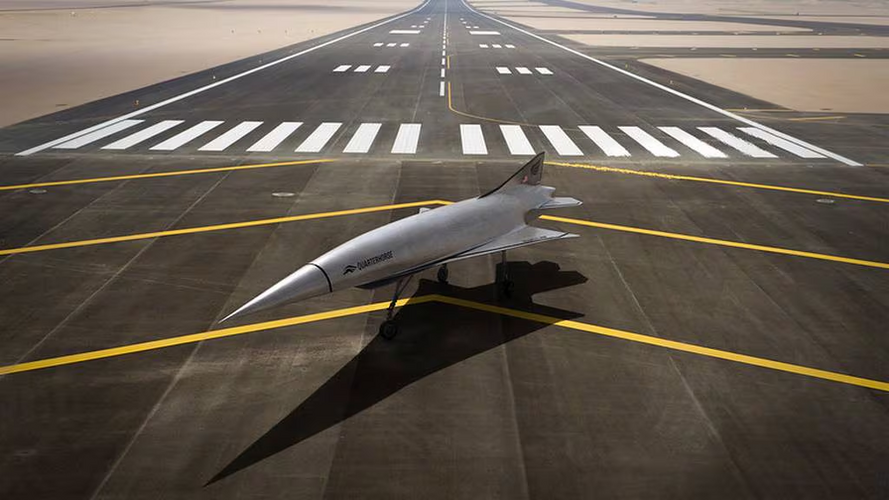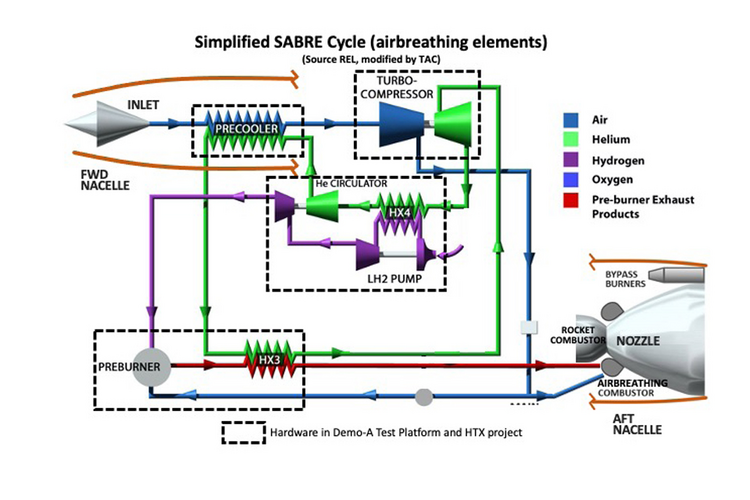X-39
To post or not to post, that is the question
- Joined
- 20 February 2021
- Messages
- 382
- Reaction score
- 928
Is that all stainless steel? I don't see any primer or paint.


 www.forbes.com
www.forbes.com



Quarterhorse Mk 1 is an uncrewed, remotely piloted aircraft powered by a GE J85 engine. Its primary mission is to demonstrate high-speed takeoff and landing – a key enabling capability unique to future hypersonic aircraft on the company’s roadmap. Flight tests will take place at Edwards Air Force Base.

Grandiose announcements and a millimetric pace forward (now a prototype for high speed rolling & praying!).
I wasn't aware that a Quarterhorse was in fact a millipede...

Quarterhorse galloping
Notice also that the Mk2, as rendered, has some dubious stability characteristics.
Atlanta-based Hermeus has been making rapid progress toward fielding the world's first reusable, air-breathing hypersonic aircraft in their Quarterhorse technology demonstrator. Last month, the company revealed Quarterhorse Mk 1, the company's first flying prototype.
Let's talk about what that means, and why it's hard not to draw parallels between Hermeus today, and another legendary aircraft manufacturer.
Fully reusable CTOL spaceplanes dropping out conventional, guided MaRVs in large numbers are where it's at.Hypersonics and scramjets are a waste of time, except perhaps for super duper missiles. Why not just go ballistic / suborbital instead, on plain old rocket power ? and out of the atmosphere, so much less thermal nightmare.
I will die on that hill: for point-to-point ultrafast transportation, hypersonics (= LAPCAT) has a big, unsolved sonic boom issue... that don't exist for suborbital. Except perhaps briefly during ascent and landing.
Plus it is far easier to hit any speed between Mach 4 and Mach 25 (= orbit) with rocket thrust.

Hypersonics and scramjets are a waste of time, except perhaps for super duper missiles. Why not just go ballistic / suborbital instead, on plain old rocket power ? and out of the atmosphere, so much less thermal nightmare.
Not sure why you feel scramjets are a waste, unless you think they will be too costly? I think the USAF intends to buy HACM quite prolifically. And I do not see a reason why something like HACM could not be produced for reasonable cost. The airframe does not really require any special materials outside of the nose tip (X-51 was basically aluminum, steel, and titanium with some space shuttle tiles on the nose). The solid rocket booster only has to be something in the size and power class of a Mk72-ish. The engine is entirely 3D printed with no moving parts. I do not see why this could not be a ~ $5 million dollar mass produced missile not to far off from SM-6 or LRASM in price. Furthermore, the relatively lower speed compared to boost gliders and RVs should make the use of a terminal radar homing sensor relatively easy to engineer. There are already radomes that have to survive Mach 5 for short periods of times; this would just extend that requirement out to five minutes instead of just seconds. Alternatively ventral mounting on the compression ramp would probably take the worst of the heat stress off the sensor window, since the tip basically acts as an aerospike for the airframe. Alternatively the sensor could just have a cover that released as weapon slowed for its dive onto the target.
It seems to me there would be a very large target set for such a missile.
The F100 engine probaly is also getting a precooler which is a very smart thing.
Not known to me which they use as they didn't give any specific about it except to bridge the phase between turbofan and ramjet which seems a little underwhelming but this may just be the specific discription for the test.Using a pre-cooler based on the pre-cooler used in the SABRE?
A pre-cooler would be very useful to increase the performance of any turbofan (F100-229 included) in the M2+ environment with high inlet temperatures. However, what heat sink are they planning on using? Liquid H2 makes a great pre-cooler heat sink and subsequently as a fuel for the engine, but I have not heard any indication that Hermeus is planning to use hydrogen.Using a pre-cooler based on the pre-cooler used in the SABRE?
With this is 100% possible at those speeds and maybe even more efficient/good for the engineScramjet is for velocities above Mach 6 (supersonic combustion). Below that, its ramjets (subsonic combustion is working). If their target is Mach 5, MIPCC on a F100 can certainly do it. Research done 30 to 25 years ago showed Mach 4.5 was feasible.
Because its relativ new, heavy, makes the engine larger, more complex engine and is Not needed as afterburner are more than enough for mach speed around 2.Why Lockheed Martin or Boeing don't use the technology of the pre cooler on their fighters ?
The helium doesn't provide combustion power, the air comes in the pre-cooled intake, passes through the compressor and then into the combustion chamber before expanding out the nozzle, while the helium heated in the pre-cooler drives the turbine to drive the compressor. SABRE uses this technique to apparently reach M5.5 in theory.That is basically the P&W 304 Suntan engine, except the heat exchanger was in the exhaust flow, using LH2 expanding to gaseous H2 driving a turbine that powered the engine fan, then burning the H2 both before the heat exchanger and in an afterburner aft of the heat exchanger. This was intended for high altitude M2.5 operation. Helium vaporization could drive a turbine, but it would be a total loss system with the helium unable to provide any additional combustion power.
But it doesn’t address any precooler for Hermeus plan for afterburning turbofan transitioning to ramjet cycle for speeds approaching M5.
I’m not saying that cycle won’t work, it is just that the helium cooling and turbine expansion seems to be low energy solution with the helium being discarded after expansion vs using hydrogen which can be burned. Unless SABRE has some way to recycle the helium back to liquid form, but that take power out of the system (is the turbine expansion only to run a helium compressor?) and you have to shed the helium compression heat somewhere else.The helium doesn't provide combustion power, the air comes in the pre-cooled intake, passes through the compressor and then into the combustion chamber before expanding out the nozzle, while the helium heated in the pre-cooler drives the turbine to drive the compressor. SABRE uses this technique to apparently reach M5.5 in theory.
The helium is recirculated back to the pre-cooler after expansion, the turbine it was expanded through drives an air compressor. After the compressed air goes through the compressor it enters the combustion chamber, where it is mixed with fuel, it is then expanded via the nozzle to provide propulsion... roughly... it's slightly more complicated overall. The LH2 pump heat-exchanger cools the expanded He further before it goes back to the pre-cooler, after heating in the pre-cooler the He is further heated by the pre-burnt H2 mix before going back to the He turbine. Picture below is worth a million words.I’m not saying that cycle won’t work, it is just that the helium cooling and turbine expansion seems to be low energy solution with the helium being discarded after expansion vs using hydrogen which can be burned. Unless SABRE has some way to recycle the helium back to liquid form, but that take power out of the system (is the turbine expansion only to run a helium compressor?) and you have to shed the helium compression heat somewhere else.

